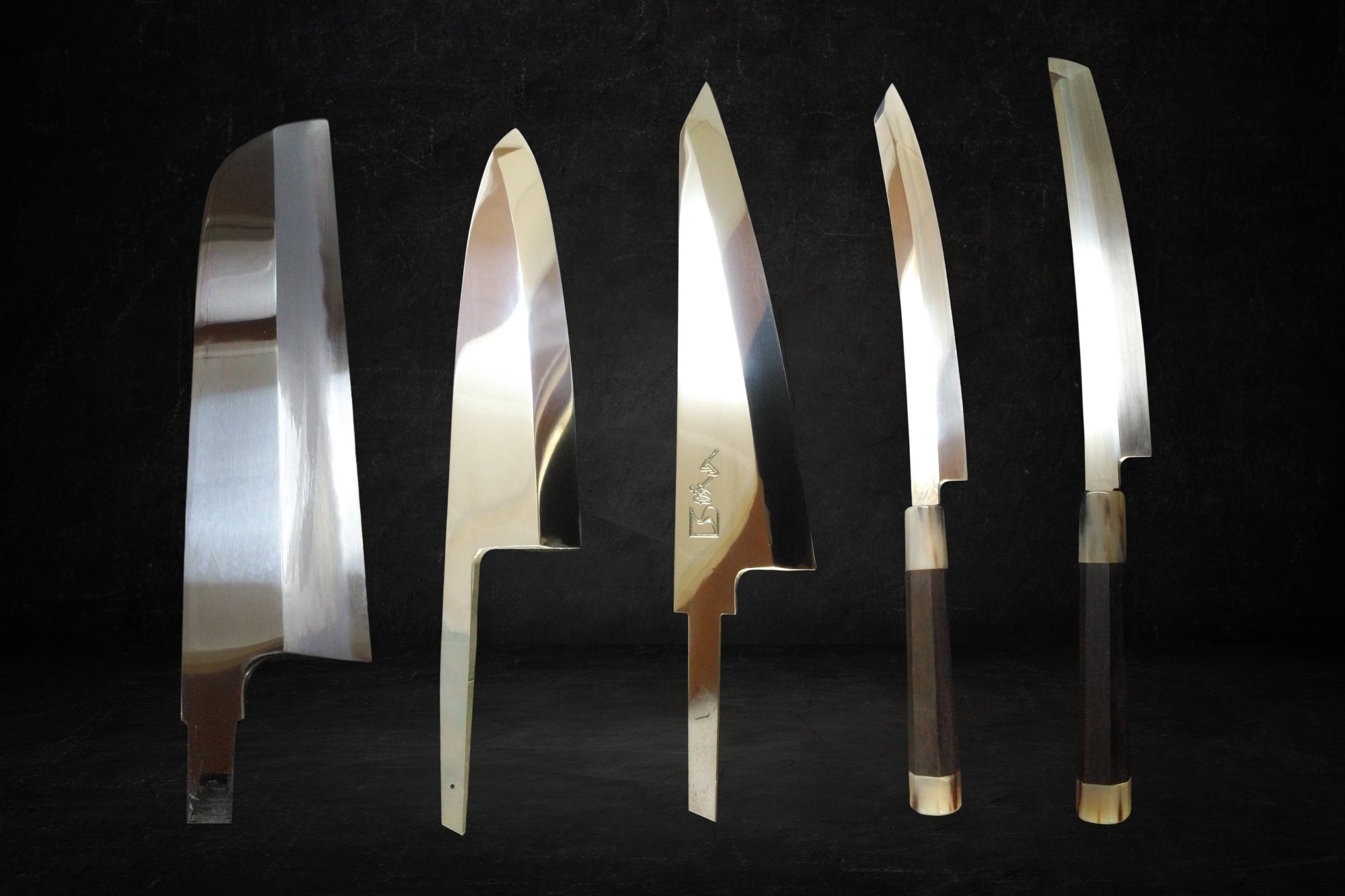
The Allure and Limitations of Ceramic Knives: A Comprehensive Overview
Share
Ceramic knives stand out in the culinary world for their lightweight design and rust resistance, yet pose a unique challenge in edge restoration.
1.Introduction
2.Unveiling Ceramic Knives: What Sets Them Apart?
2-1. The Making of Ceramic Knives: Materials and Process
2-2. The Unique Advantages of Ceramic Knives
2-3. Considerations Before Purchasing: Are Ceramic Knives Right for You?3.The Limitations of Ceramic Knives: Understanding the Drawbacks
3-1. Durability Concerns: The Brittle Nature of Ceramic
3-2. Maintenance and Care: Special Considerations
3-3. Usage Restrictions: What Ceramic Knives Can and Cannot Do
4.Personal Insights: My Experience with Ceramic Knives
5.Frequently Asked Questions
6.Conclusion
Introduction:
The quest for the perfect kitchen knife is a journey every culinary enthusiast embarks on, leading many to the intriguing world of ceramic knives. Known for their razor-sharp edges and lightweight design, ceramic knives have carved a niche in the cutlery market, appealing to both professional chefs and home cooks alike. This comprehensive overview delves into the allure that ceramic knives hold, balanced with an honest look at their limitations. Whether you're considering your first ceramic purchase or simply curious about these modern marvels, our guide aims to equip you with the knowledge needed to make an informed decision. From the unique manufacturing process to the specialized care they require, we explore what makes ceramic knives a cutting-edge choice and when you might want to think twice before adding them to your collection.
2.Unveiling Ceramic Knives: What Sets Them Apart?
Ceramic knives stand out in the culinary world for their distinctive characteristics, primarily derived from their material composition. Made from zirconium oxide, also known as zirconia, these knives undergo an intense sintering process where powders are transformed into solid, durable blades at high temperatures. This process yields knives that are incredibly hard, second only to diamonds, which contributes to their long-lasting sharpness and minimal maintenance needs.
2-1. The Making of Ceramic Knives: Materials and Process
The journey of a ceramic knife from raw material to kitchen tool is fascinating. Zirconium oxide powder is pressed into a blade shape and then fired in a kiln at temperatures exceeding 1,400 degrees Celsius. This process, known as sintering, solidifies the powder into a very hard and dense form. The blades are then sharpened to a fine edge with a diamond-dust-coated grinding wheel, resulting in a cutting tool that can retain its edge up to ten times longer than traditional steel knives.
2-2. The Unique Advantages of Ceramic Knives
The advantages of ceramic knives are numerous. Their exceptional sharpness allows for precision cutting, making them ideal for tasks that require fine slicing, such as preparing fruits, vegetables, and boneless meats. Their resistance to acids, oils, and other corrosive substances also means they won't rust or change color over time, ensuring that flavors remain pure and uncontaminated. Additionally, ceramic knives are lightweight, making them easy and comfortable to use during prolonged cooking sessions.
2-3. Considerations Before Purchasing: Are Ceramic Knives Right for You?
Before investing in ceramic knives, it's crucial to consider your cooking habits and needs. These knives excel in specific tasks but are not suitable for all kitchen duties. Understanding where they fit within the spectrum of culinary tools is essential for making an informed decision.
3.The Limitations of Ceramic Knives: Understanding the Drawbacks
Despite their numerous benefits, ceramic knives do have limitations that are important to acknowledge. Their hard nature, while contributing to their sharpness, also makes them brittle and prone to chipping or breaking if misused.
3-1. Durability Concerns: The Brittle Nature of Ceramic
Ceramic knives must be handled with care to prevent damage. Their brittleness means they can easily chip or break if dropped on a hard surface or used to cut through hard or frozen foods. This limitation requires users to be mindful of the tasks they use these knives for, reserving them for softer, more delicate cutting jobs.
3-2. Maintenance and Care: Special Considerations
While ceramic knives require less frequent sharpening, they do need special tools when the time comes. A diamond-dust sharpener is necessary due to the hardness of the ceramic. Storage is also crucial; using a knife block or protective sheaths can help prevent accidental damage.
3-3. Usage Restrictions: What Ceramic Knives Can and Cannot Do
It's important to understand that ceramic knives are not all-purpose tools. They are not suitable for tasks such as boning, carving, or cutting through hard materials like frozen foods or bones. Knowing these limitations can help prevent misuse and prolong the life of the knife.
4.Personal Insights: My Experience with Ceramic Knives
In my culinary journey, ceramic knives have been a game-changer for certain tasks. Their lightweight design and sharp edge make them a joy to use for slicing fruits and vegetables. However, learning to navigate their limitations was an essential part of integrating them into my kitchen practices.
5.Frequently Asked Questions
-
Q: Can ceramic knives be sharpened at home? A: Yes, but it requires a diamond-dust sharpener due to their hardness.
-
Q: Are ceramic knives dishwasher safe? A: While technically yes, hand washing is recommended to prevent damage.
- Q: Can ceramic knives replace all my other knives? A: No, they are best used as a complement to your cutlery for specific tasks.
6.Conclusion
Ceramic knives offer a unique set of benefits for the right culinary tasks, from their enduring sharpness to their resistance to corrosion and discoloration. However, understanding their limitations is key to maximizing their lifespan and integrating them effectively into your cooking repertoire. With the right care and usage, ceramic knives can be a valuable addition to any kitchen, providing unparalleled precision and ease in specific cutting tasks.
Related websites
Mastering Japanese Knife Sharpening: Techniques & Tips | KIREAJI





